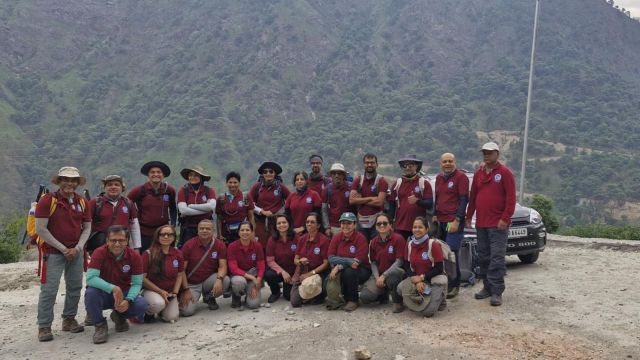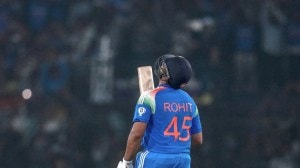‘We saw people dying in front of us, unable to even drink water’: Uttarakhand trekking tragedy survivors recount horror
Nine trekkers from Bengaluru died after a blizzard struck on Monday afternoon during the treking expedition to Sahastra Tal in Uttarkashi.
 The trekkers from Bengaluru team departed for Dehradun on May 29. (Express)
The trekkers from Bengaluru team departed for Dehradun on May 29. (Express)“It was all good till the blizzard started and it was havoc later. We saw people dying in front of us as we took shelter under a big rock. It was only after the rescue we came to know we were just one hour from the base camp,” recalls Madhu Kiran Reddy, 52, one of the survivors of the Uttarakhand trekking tragedy.
Reddy was part of a 22-member team, comprising 19 experienced trekkers from the Karnataka Mountaineering Association and three local guides, that took part in the expedition to Sahastra Tal in Uttarkashi. Nine trekkers from Bengaluru died after the blizzard struck around 2 pm on Monday.
Sahastra Tal trek is one of the least visited high-altitude treks in India. It reaches an altitude of 16,400 feet and is considered to be moderately difficult. The survivors said they encountered blizzards at around 12,000 feet while returning from Lambtal to Sahastra Tal peak.
Reddy, who has done more than 25 challenging treks, said the trek was normal until the blizzard started and lasted more than four hours. “We could not see even one foot ahead of us,” he said, adding that two people died on Monday night in front of the others. Two others died by Tuesday morning, and five more the next day.
On Wednesday, two Chetak helicopters of the Indian Air Force (IAF) and a private chopper were deployed to rescue the stranded trekkers. The State Disaster Response Force (SDRF) also dispatched two teams — one each from Dehradun and Uttarkashi.
According to a health official from Karnataka, the deaths happened due to hypothermia, a medical emergency condition when the core body temperature drops below 95 degrees Fahrenheit (35 degrees Celsius), leading to instant death. The normal body temperature is around 98.6 degrees Fahrenheit. Blizzards are severe snowstorms with strong winds and low visibility that can last aound four to five hours. They cause severe cold to the body and lead to dehydration.
Speaking to The Indian Express, Srivatsa S, secretary of the Karnataka Mountaineering Association, said the rescued people told him that it was freezing cold and they were dehydrated. “Also, at that temperature, they were even unable to drink water, and the body temperature had drastically decreased, leading to deaths.”
Taking the account of survivors, Srivatsa said it was all fine for them till the blizzards struck. “On June 3, around 3.30 pm, when they returned to the base camp, the blizzards struck and everyone took shelter. But as it continued, the body temperature dropped and they tried to stay between rocks. They lost visibility and two people who were ahead were not affected.”
“Seven members of the team returned to Lambtal to pass the message on Monday and by then four people had died. Food supplies, tents and other things were being arranged for the stranded. The Indian Air Force eventually used helicameras to locate and rescue them. But by the time the rescue team reached them, another five had lost their lives, said Srivatsa.
The deceased were identified as Bengaluru residents Asha Sudhakar, 71; Anitha Rangappa, 55; Venkatesh Prasad K, 53; Vinayak Mungurwadi, 52; Sujata Mungurwadi, 52; Padmanabha K P, 50; Chitra Praneeth, 48; Sindhu Wakelam, 44, and Padmini Hegde, 34. The bodies were airlifted from Joshimath to Dehradun on Thursday evening. They will be transported by road to Delhi and then by air from Delhi to Bengaluru, said Karnataka Revenue Minister Krishna Byre Gowda.
The trekkers from Bengaluru team departed for Dehradun on May 29. Their trekking began on May 30 from Gairu, and they were supposed to return on June 8.







